Trees Birds Mammals Fish Amphibians Reptiles
Wild Algarve
Bookshop
Clavulina coralloides (L.) J. Schröt. - Crested Coral
Phylum: Basidiomycota - Class: Agaricomycetes - Order: Cantharellales - Family: Clavulinaceae
Distribution - Taxonomic History - Etymology - Identification - Culinary Notes - Reference Sources
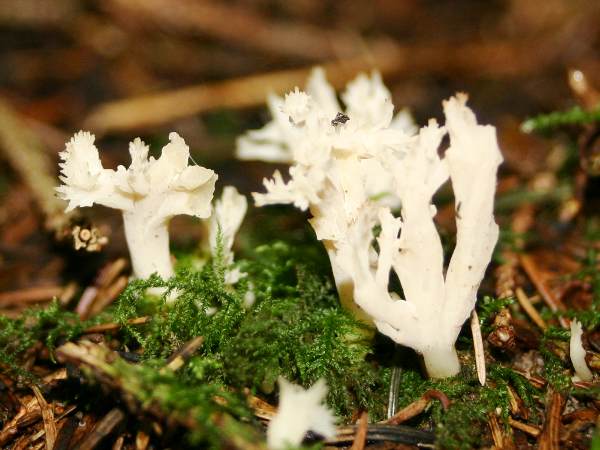
This small fungus with crested branch tips is probably the most commonly encountered of the many coral-like fungi in this genus; it is easily spotted when it occurs beside woodland footpaths.
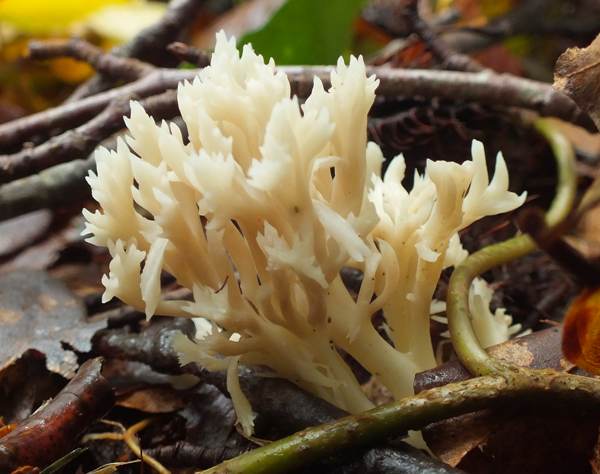
Distribution
Common and widespread in woods and occasionally in grassland in Britain, Ireland and other parts of northern Europe, Clavulina coralloides is also recorded in North America and in many other temperate parts of the world.
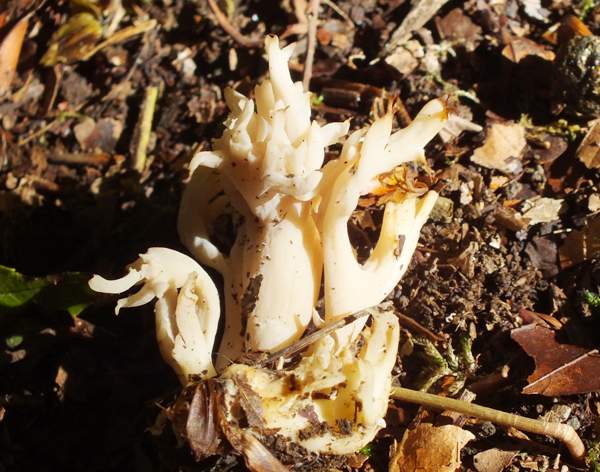
Taxonomic history
Crested Coral was described in 1753 by Carl Linnaeus in his Species Plantarum, wherein he gave it the scientific binomial name Clavaria coralloides. This species remained in the genus Clavaria for more than a century, until in 1888 the German mycologist Joseph Schrötter (1837 - 1894) transferred it to the genus Clavulina, thereby establishing the currently-accepted scientific name Clavulina coralloides.
Crested Coral, has acquired several synonyms including Clavaria coralloides L., Ramaria cristata Holmsk., Clavaria cristata (Holmsk.) Pers., Clavulina cristata var. lappa P. Karst., Clavulina cristata (Holmsk.) J. Schröt., Clavulina cristata f. subcinerea Donk, Clavulina cristata var. coralloides Corner, Clavulina cristata var. incarnata Corner, Clavulina cristata var. subrugosa Corner. The synonym Clavulina cristata was commonly used in field guides until recently.
Etymology
The specific epithet coralloides means resembling coral.
Identification guide
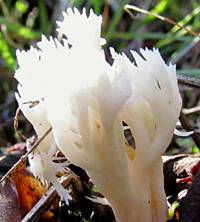 |
Fruitbody
The fused branches rise up from a base typically 1.5 to 2.5cm tall and reach a total height of up to 7cm. The tips of this white to cream coral fungus turn brown with age.
When attacked by micro fungi, this coral can turn grey or even black, making identification more confusing. |
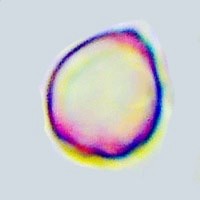 |
Spores
Broadly ellipsoidal to subspherical, smooth, 6-9 x 6-7.5µm; inamyloid.
Spore print
White.
Basidia
Club-shaped, 2-spored. |
Odour/taste |
Odour not distinctive; taste mild but not distinctive. |
Habitat & Ecological role |
Considered to be mycorrhizal, singly or in small groups on the ground
beneath deciduous and coniferous trees, very often beside footpaths; occasionally in unimproved dune grassland with Dwarf Willow. |
Season |
August to December in Britain and Ireland. |
Similar species |
Clavulina rugosa is a
white, round-tipped slightly branching fungus with more distinct surface
wrinkles. |
Culinary Notes
Although reportedly edible, Crested Coral is so insubstantial (and said to be insipid) that it is not generally collected for food; we have no recipe information for this species.
Reference Sources
Fascinated by Fungi, 2nd Edition, Pat O'Reilly 2016, reprinted by Coch-y-bonddu Books in 2022.
Dictionary of the Fungi; Paul M. Kirk, Paul F. Cannon, David W. Minter and J. A. Stalpers; CABI, 2008
Taxonomic history and synonym information on these pages is drawn from many sources but in particular from the British Mycological Society's GB Checklist of Fungi.
Top of page...
Fascinated by Fungi. Back by popular demand, Pat O'Reilly's best-selling 450-page hardback book is available now. The latest second edition was republished with a sparkling new cover design in September 2022 by Coch-y-Bonddu Books. Full details and copies are available from the publisher's online bookshop...